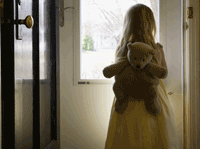
Essex Council has confirmed it will close all of its children’s homes by the end of the year.
The formal decision to close the council’s six remaining children’s homes – one eight-bed home closed several months ago – was taken by the cabinet this morning. The 131 members of staff and 29 children affected will be informed of the decision today.
A formal consultation process will follow to determine the future employment of staff and a consultation with parents, children and carers will decide where the children are to be moved.
Community Care understands there will be redundancies, but the council is hoping to redeploy as many members of staff as possible to other posts within the authority. It is expected that the homes will all be closed by the end of the year.
Speaking to Community Care today Sarah Candy, cabinet member for children’s services, said the council would take time to “ensure that ongoing arrangements are handled sensitively and appropriately and cause as little disruption to the lives of the children as possible”.
“The best interests of children has been embedded in the council’s decision making and political will from the very beginning,” she maintained.
The controversial move – first mooted in December – provoked national media coverage when Community Care published a letter sent to David Cameron by a 16-year-old living in one of the at-risk homes.
The teenager, named only as ‘B’, described to the prime minister his fear at the thought of losing his home, explaining that he had already experienced 17 different placement moves since being in care.
A spokesperson for the prime minister confirmed that Cameron had replied to the letter.
Candy said she had also met the teenager, who was still “very anxious” about the move, and was planning to meet him again. She said she had also received a letter from another concerned young person but added that she had “not been inundated with letters or concern”.
“Of course, anxiety is completely understandable, but when you take the raw emotion out of this, our decision is practical and child-centred. We recognised that our in-house provision was old-fashioned and was not meeting the needs of our young people.
“Many of the beds in our homes were already empty because we were placing young people in more appropriate external placements. That was wasting money. We want to be able to give young people the placement that they need, not just the bed that we have, and we now have the freedom to do that,” she said.
The Conservative-led council, which has a looked-after population of around 1,600, has previously been praised for its innovative approach to residential child care, including the use of social pedagogy.
But Candy said her department’s aspiration was to place “as many looked-after children as possible in family placements”, confirming that the £1m annual savings from closing the homes would be re-invested into early intervention services and specialist foster care.
However, she said the council fully understood the ongoing need for residential care. “Over 100 of our looked-after children are in external residential placements and we will continue to make use of external provision, where appropriate.”
What do you think?Join the debate on CareSpace
Keep up to date with the latest developments in social care. Sign up to our daily and weekly emails
Related articles


 Bournemouth, Christchurch and Poole
Bournemouth, Christchurch and Poole  Hampshire County Council
Hampshire County Council  Lincolnshire County Council
Lincolnshire County Council  Norfolk County Council
Norfolk County Council  Northamptonshire Children’s Trust
Northamptonshire Children’s Trust  South Gloucestershire Council
South Gloucestershire Council  Wiltshire Council
Wiltshire Council  Wokingham Borough Council
Wokingham Borough Council  Children and young people with SEND are ‘valued and prioritised’ in Wiltshire, find inspectors
Children and young people with SEND are ‘valued and prioritised’ in Wiltshire, find inspectors  How specialist refugee teams benefit young people and social workers
How specialist refugee teams benefit young people and social workers  Podcast: returning to social work after becoming a first-time parent
Podcast: returning to social work after becoming a first-time parent  Podcast: would you work for an inadequate-rated service?
Podcast: would you work for an inadequate-rated service?  Family help: one local authority’s experience of the model
Family help: one local authority’s experience of the model  Workforce Insights – showcasing a selection of the sector’s top recruiters
Workforce Insights – showcasing a selection of the sector’s top recruiters 

 Facebook
Facebook X
X LinkedIn
LinkedIn Instagram
Instagram
Comments are closed.